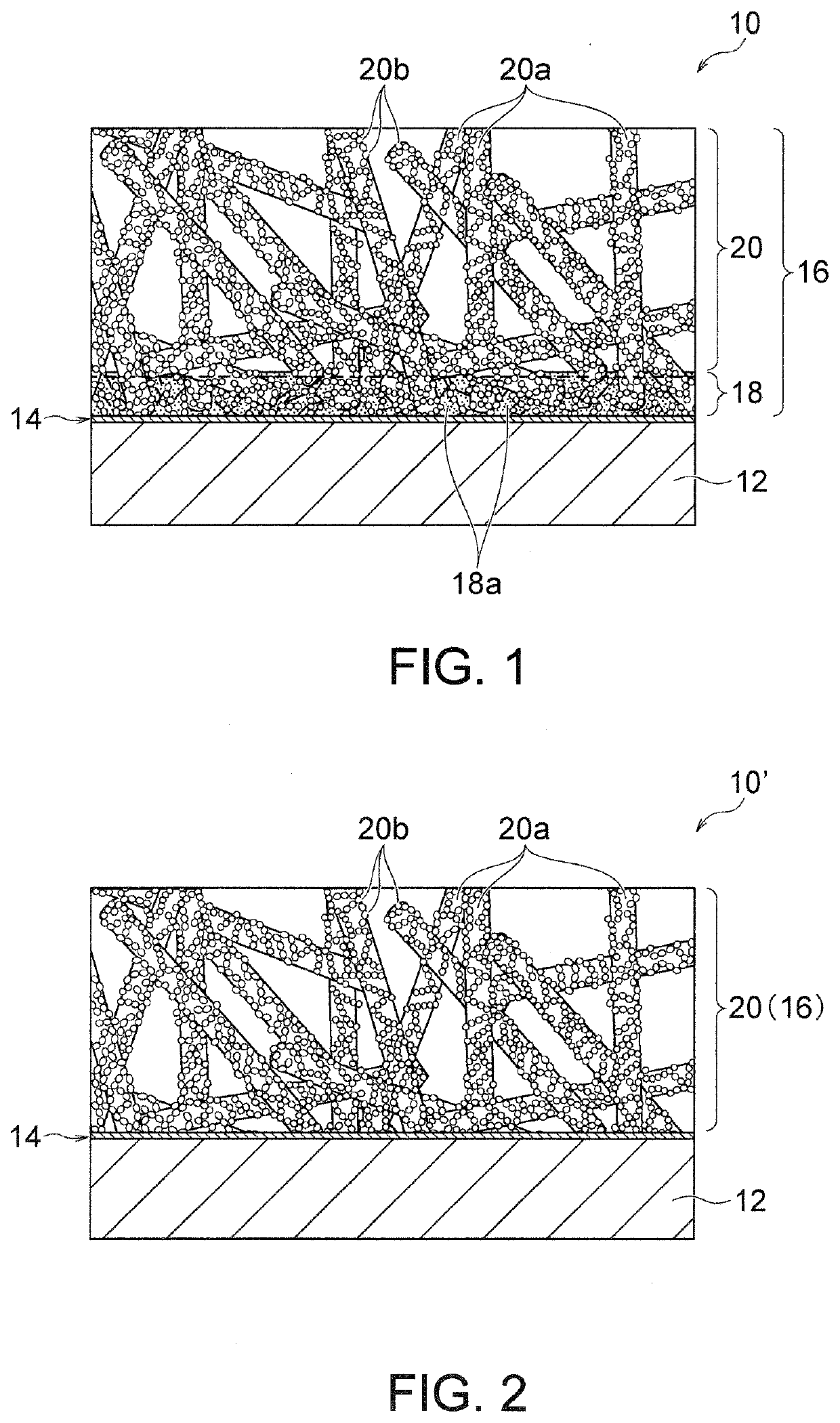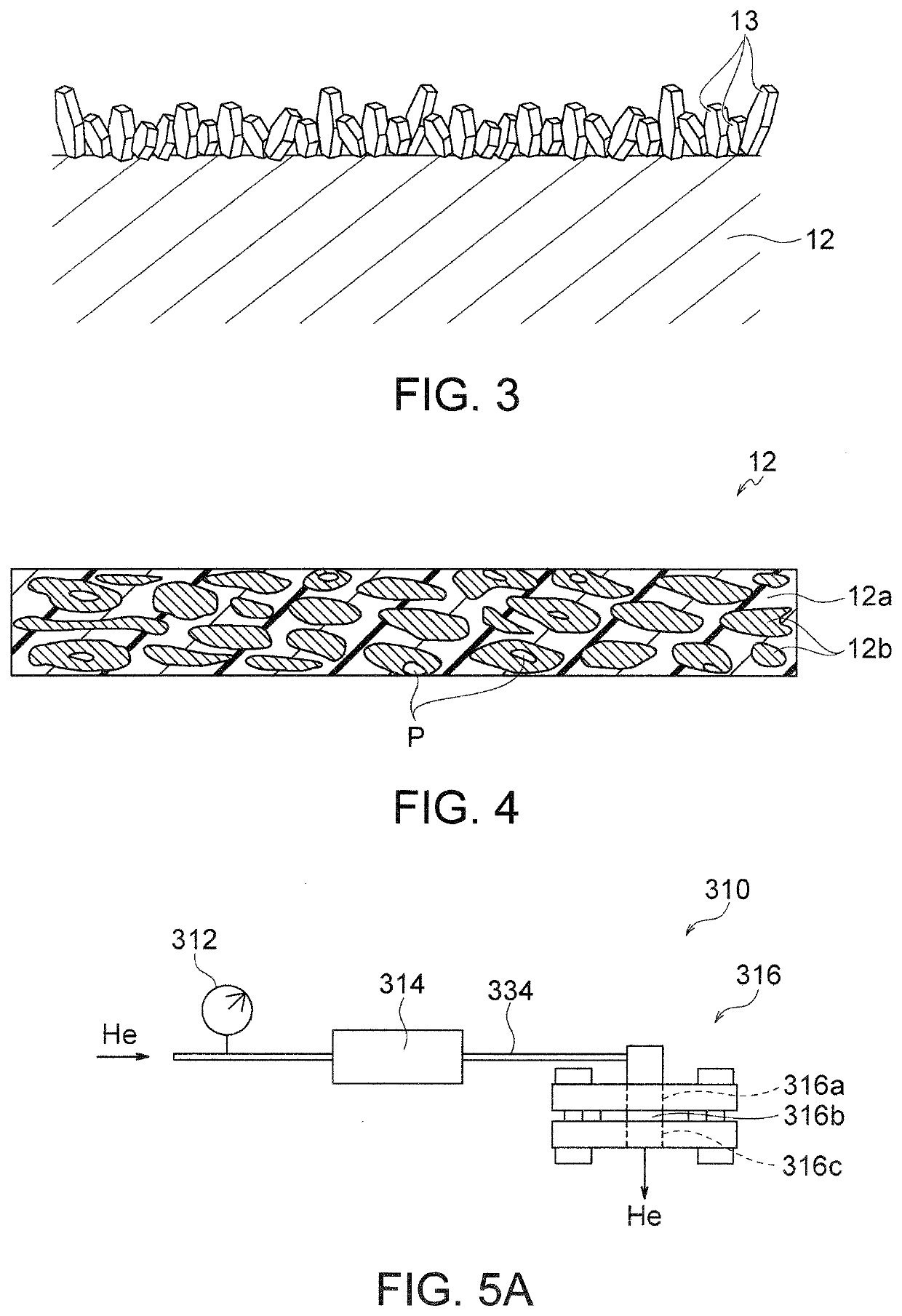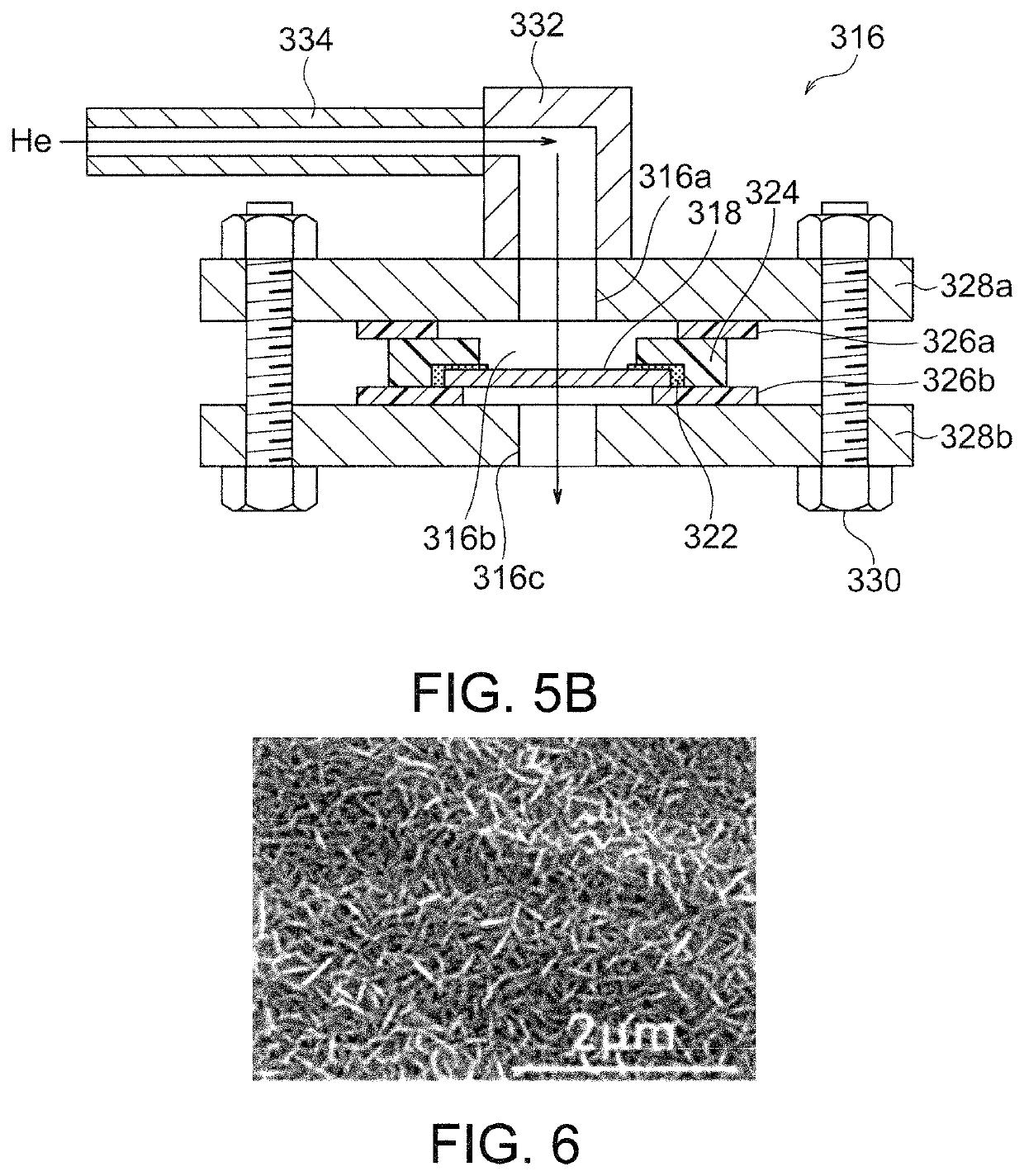Air electrode/separator assembly and metal-air secondary battery
a secondary battery and air electrode technology, applied in the direction of hybrid cell details, cell components, cell component details, etc., can solve the problems of low hydroxide ion conductivity, low charge/discharge performance, and absence of electrolyte in the air electrode layer, so as to improve charge/discharge performance, excellent charge/discharge performance, and reduce the effect of hydroxide ion conductivity
- Summary
- Abstract
- Description
- Claims
- Application Information
AI Technical Summary
Benefits of technology
Problems solved by technology
Method used
Image
Examples
examples
[0076]The present invention will be described in more detail by the following examples.
example a1
[0077]LDH separators were fabricated by the following procedure and evaluated.
[0078](1) Provision of Polymer Porous Substrate
[0079]A commercially available polyethylene microporous membrane having a porosity of 50%, an average pore diameter of 0.1 μm and a thickness of 20 μm was provided as a polymer porous substrate, and cut out to a size of 2.0 cm×2.0 cm.
[0080](2) Alumina.Titania Sol Coating on Polymer Porous Substrate
[0081]Amorphous alumina solution (Al-ML15, manufactured by Taki Chemical Co., Ltd.) and titanium oxide sol solution (M6, manufactured by Taki Chemical Co., Ltd.) were mixed in Ti / AI (molar ratio)=2 to fabricate a mixed sol. The substrate provided in (1) above was coated with the mixed sol by dip coating. The dip coating was carried out by immersing the substrate in 100 ml of the mixed sol, pulling it up vertically, and drying it in a dryer at 90° C. for 5 minutes.
[0082](3) Preparation of Raw Material Aqueous Solution
example b1
[0103]An air electrode / separator assembly having two layers of an interface layer and an outermost catalyst layer on the LDH separator fabricated in Example A1was fabricated by the following procedure and was evaluated.
[0104](1) Fabrication of Outermost Catalyst Layer
[0105](1a) Iron Oxide Sol Coating on Conductive Porous Substrate
[0106]10 ml of iron oxide sol (Fe—C10, iron oxide concentration of 10% by weight, manufactured by Taki Chemical Co., Ltd.) diluted with ion-exchanged water and adjusted to a concentration of 5% by weight was placed in a beaker, and carbon paper (TGP-H-060, thickness of 200 μm, manufactured by Toray Industries, Inc.) was immersed therein. The beaker was evacuated to allow the iron oxide sol to fully penetrate into the carbon paper. The carbon paper was pulled up from the beaker by using tweezers and dried at 80° C. for 30 minutes to obtain a carbon paper to which iron oxide particles were adhered as a substrate.
[0107](1b) Preparation of Raw Material Aqueous ...
PUM
| Property | Measurement | Unit |
|---|---|---|
| porosity | aaaaa | aaaaa |
| thickness | aaaaa | aaaaa |
| electron conductive | aaaaa | aaaaa |
Abstract
Description
Claims
Application Information
 Login to View More
Login to View More - R&D
- Intellectual Property
- Life Sciences
- Materials
- Tech Scout
- Unparalleled Data Quality
- Higher Quality Content
- 60% Fewer Hallucinations
Browse by: Latest US Patents, China's latest patents, Technical Efficacy Thesaurus, Application Domain, Technology Topic, Popular Technical Reports.
© 2025 PatSnap. All rights reserved.Legal|Privacy policy|Modern Slavery Act Transparency Statement|Sitemap|About US| Contact US: help@patsnap.com



